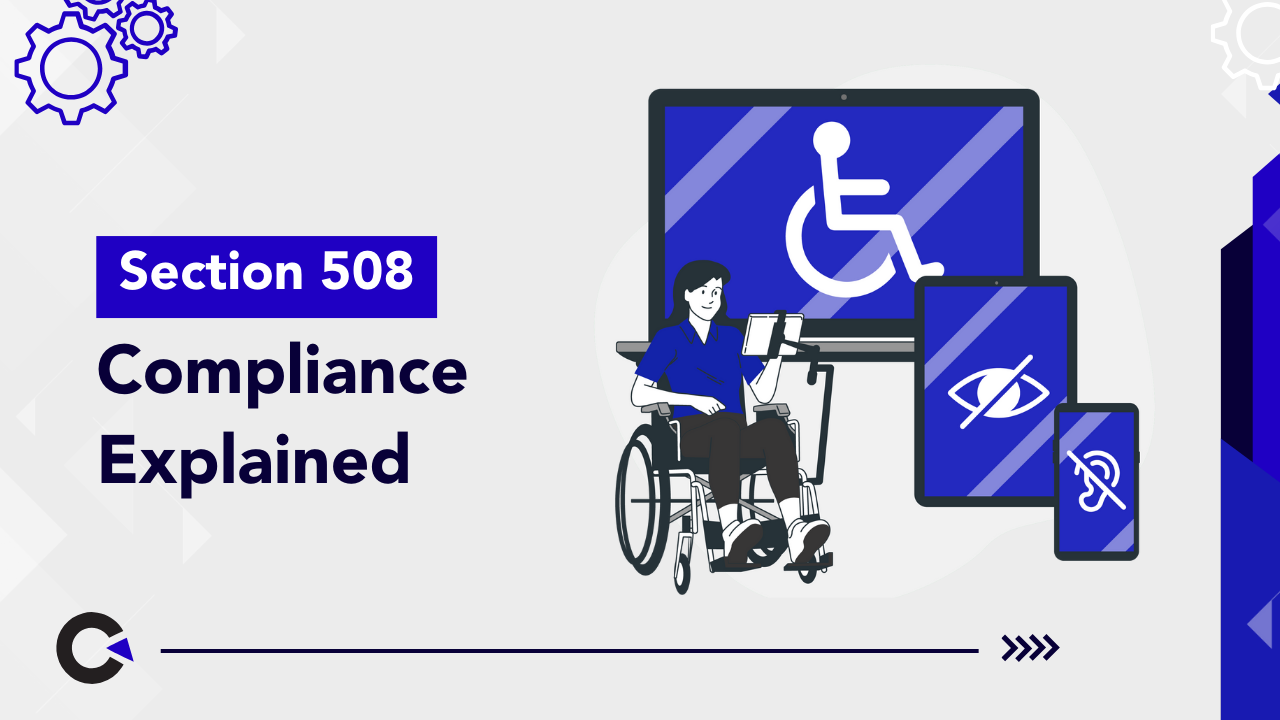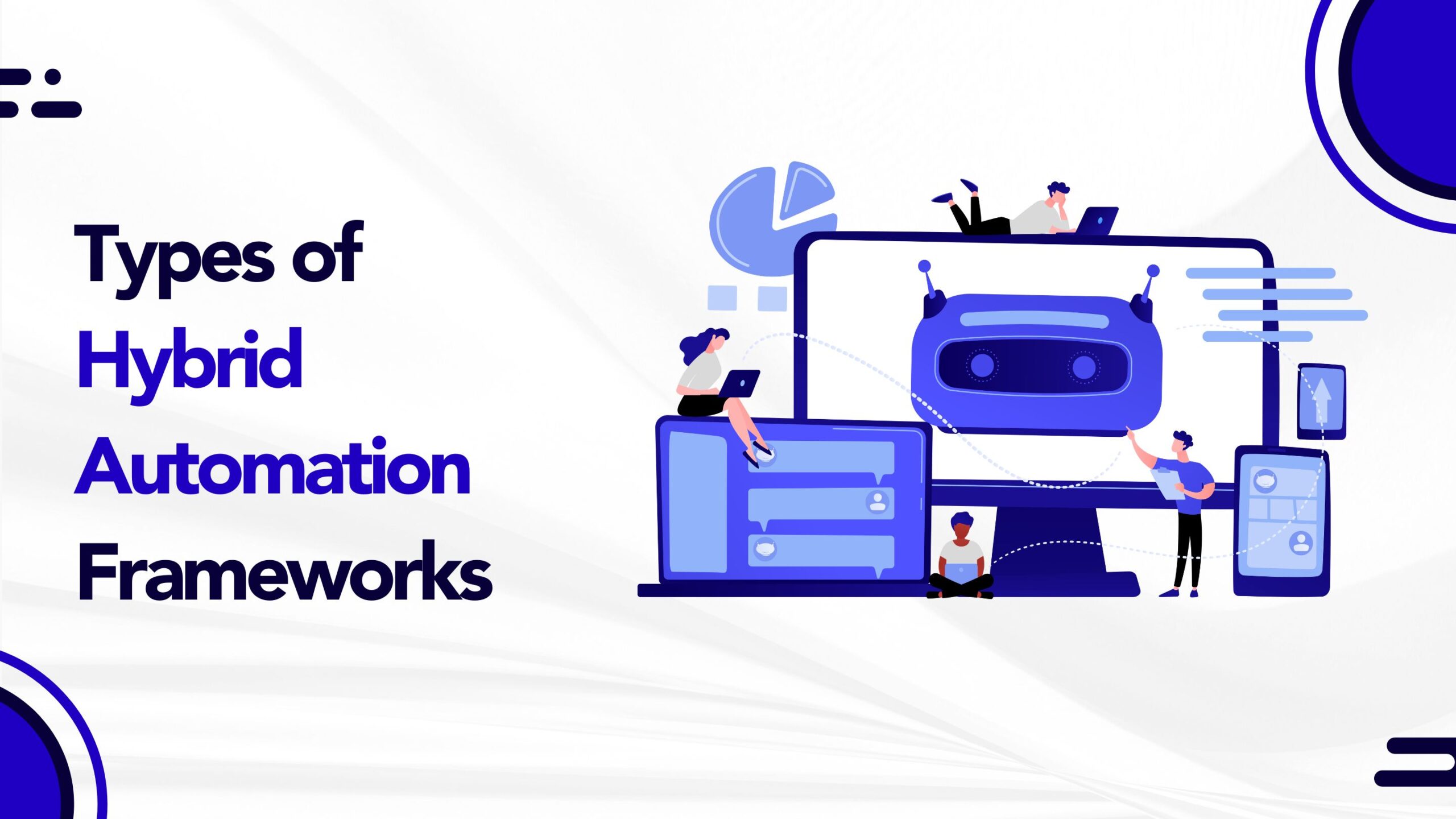
by admin | Dec 13, 2019 | Automation Testing, Fixed, Blog |
In the software industry, there is a constant dispute that surrounds test automation and who can be involved in the design, creation, and maintenance of it. Under various scenarios, there are different degrees of success for the team, product, and company, depending on who within the team does it. When the team uses Test-Driven Development (TDD), developers write code at the unit level to get quick feedback while the QA testers write code to verify higher-level integration layers.

Developers write these unit tests to verify Javascript validation of inputs in the browser and integration tests to check server-side validation of content. QA testers write web driver tests driving the browser for a full-stack validation to ensure that the end-user is talking to the server. The team should code in a maintainable format, and existing tests or any refactoring happens on work in progress, testing frameworks, naming libraries, and patterns used. A cohesive team would build tests according to the pyramid testing stack, and every layer would have different criteria.
The principles for test automation are readability, robustness, and speed. It is a complex process that continually evolves the testing infrastructure along with the product in the development phase. It includes unit tests of the validation in Javascript, integration tests of the server-side validation and data persistence, and a journey test to ensure the new page connects with the data flows as expected. The developers use these scenarios as part of their TDD work, and the QA performs exploratory testing when functionality is available, providing feedback until they meet acceptance criteria. Developers need to be involved in all of the test stacks so that they can refactor existing tests and add new ones without duplication. The QA team provides valuable input on what to test, and the testing infrastructure is built accordingly.
Advantages of a separate test automation team:
- The team shares knowledge on updates to the framework code and review of new tools and libraries together.
- This reduces duplicate code, and most core modules are reused and shared for other tests.
- The team contributes to and uses a consolidated test automation framework.
- Team members work in isolation without daily scrum meetings and can focus entirely on automation work.
- Each team member is assigned to a scrum team, and they help each other out when automation becomes complex.
- The QA team can focus on updating and refactoring the framework to facilitate and simplify the scripting of test code.
As an automation testing services company, Codoid knows the importance of having a dedicated team that not only develops the product but is also involved in the testing process after that. It is ideal if both teams are separate, but it is also imperative that both teams are well-integrated and highly skilled to ensure that times to market and project deadlines are achieved. That’s why we believe companies should focus on their developmental process and leave testing to a test automation services company that uses advanced tools, techniques, and methodologies.

by admin | Dec 15, 2019 | Software Testing, Fixed, Blog |
There are various essential phases in software development, like requirement identification, actual development, testing, and installation on the end-user system. Due to human error, bugs can quite easily get introduced into the software during its development phase. That’s why before releasing code for installation on a clients’ server, software testing has to be done in advance to avoid any fallacious execution that could ruin the user’s experience.
It is a conventional form of testing where test engineers check if the developed application is working according to the requirements or not. Right from the coding phase of SDLC to the end, the software goes through thorough testing of every component of the software. The QA team must take into account every possible scenario while designing the test cases. Whatever type of test data is used by your QA team impacts the overall testing process.

Traditional software development and its testing is a spiral process. Let’s discuss the testing techniques for conventional software architecture.
1. Unit testing: At the center of the testing spiral, you begin with unit testing, which aims to test every component/unit of software for functionality to ensure code works properly as a unit.
Some types of unit examples are:
- Interface testing: Checks the proper flow of information in and out of the program.
- Local data structure testing: During execution, it checks the integrity of data.
- Boundary condition testing: Ensures smooth operation to limit processing at boundaries.
- Independent path testing: Requires all statements to be executed once, at least.
- Error handling path testing: Checks if error messages are user-friendly.
2. Integration testing: It focuses on the problems of verification and construction because further down the testing process, these units must be integrated to form a complete software package.
3. Validation testing: This higher-order test uses validation criteria defined during the requirement analysis phase to check if the software meets all functional, behavioral, and performance requirements.
The QA/testing team tests the software to see if it provides the desired results or not by feeding the data into the system and executing it. Analyze the output and see if the desired results are generated because this is the primary purpose of creating the entire testing process. To ensure that the software keeps performing correctly even if the end-user enters wrong information. It should not yield unexpected results in the case of non-standard inputs. There should be sufficient test data to check the responses of even adverse scenarios. Hence, expert testers and developers are divided over their opinion on whether real or synthetic data should be used for testing purposes. For example, wrt to narrowly focused tests, synthetic data works better, but actual test data is better suited for close simulations.
A leading QA company will always be able to advise you accordingly and in the long run, help reduce high costs to your business. That’s why you should employ a top software testing company like Codoid to handle all your testing requirements.

by admin | Dec 16, 2019 | Automation Testing, Fixed, Blog |
It is necessary to manage testing efforts by creating test suites for your assets. To facilitate, you should introduce a Test Automation Suite. It doesn’t make testing more accessible and may increase maintenance. That’s why many software testing companies are undecided about the need for test automation even though it has become a necessity in the Software Development Lifecycle process (SDLC) to reduce time. Development and Quality Assurance (QA) teams are depending on automated checks to make sure that the software is delivered in shorter durations and exceed end-user quality expectations. Companies have started to realize that executing accurate automated tests is a worthy investment to advance their testing processes further.
You should be wary of the causes of diminished returns on your test automation investment to leverage your test automation suite. Like trying to force tools to do actions, it can’t because it can lead to poor results. Make QA engineers/testers aware of all tool features so that you can have an efficient implementation at a higher ROI. The following guidelines will allow you to facilitate the maintenance of your automated test suites.

Plan the test suite
Planning increases the chances of testing being productive, and it is an essential part of the strategy for test automation. It articulates to the developers how you plan to maintain test assets. Use test tooling to capture data and treat this like any other asset in your test repository.
Run enough automated tests
Automated tests will give higher ROI if you run them frequently and will have three benefits:
- Reduced overall application cost
- Quality feedback is more often
- Easier to detect, analyze, and fix defects.
- Tests run in a stable manner
Centrally locate your test assets
Position test assets in a repository that can be easily accessed by developers with test management tools to facilitate maintenance of the test suites to ensure integrity.
Create with maintainability in mind
When creating automated tests, keep reliability at the fore of your decision while building your production code. Else, the time taken for the following will increase:
- Updating tests to reflect the current state.
- Analyzing failed tests and finding out you’re test was not up to date. You don’t want automation to become a burden when it was meant to be an accelerator.
Test assets treated like any other software
Test cases and test scripts should be maintained, and it can be of various kinds for automated test suites. During the lifecycle of your test suites, identify and plan the test suite maintenance. Whether corrective, preventative, or adaptive maintenance.
Improve the testability of test suites
Use test suites to communicate decisions to your developers and testers to perform continuous perfective maintenance and consider test suites as assets to both teams.
Learn the craft
To get maximum ROI from test automation, understand that it is a craft, and the implementation requires specific expertise despite the use of automation tools that can help create, maintain, and execute automated tests.
Clean up test suites
Maintain test suites by consistently checking if test assets are valid. During maintenance, cultivate a practice with developers and testers to create packages for obsolete tests or test suites and label them.
That’s why if you’re struggling with this, you should reach out to a qualified automation testing services company like Codoid, and you can guarantee your clients a smooth transition to test automation suites. Only skilled test automation services companies ensure they are up to date with the latest in technology and trends, and their QA and development teams adopt and implement the best practices that are sure to maximize your ROI.

by admin | Dec 17, 2019 | QA Outsourcing, Fixed, Blog |
Achieving product quality throughout your company DNA to meet targets is the biggest challenge for quality assurance (QA) teams across the IT industry. Despite your team being outsourced or in-house, management, development, and QA together will build an efficient software development lifecycle (SDLC) process through combined experience and efforts.
During pre-planning As part of the pre-planning, they help define testable use case scenarios. They actively participate in the project to assess risk analysis quality and implement testing strategies, thus minimizing risks later. The time needed to debug and check failures is lesser and results in better ROI overall.
During sprint planningMobile App Testing Being a leading QA Company, we write blogs on all prominent software testing topics and tools using our real-world experience. So stay sharp by subscribing to our Newsletter QA Outsourcing teams Identify functional, non-functional, and exploratory testing of the latest features during sprint runs that create real-time reports. They should work closely with the development team and facilitate communication for the team inside and out.
During the sprint Driven by the QA team, new test creation, and TDD can save time, and if they prepare regression tests during sprints, automated tests will be ready faster to speed up the deployment phase. With CI/CD environment, it can be almost six times faster. QA teams split tasks into tests and user case scenarios to help developers concentrate on core functionalities in task management.
Let’s discuss some best practices for the QA teams to achieve their set goals:
- Know your stakeholders and their effect on quality within their role and provide actionable data to them.
- Participate in roadmap planning and cross-functional processes so that code meets user expectations and is testable.
- Have daily cross-department meetings with all teams to decide solutions for defects or user escalations.
- Analyze issues and feed them through the product roadmap and scrum plan to tackle problems that affect quality.
- Advocate for quality through zero tolerance for delays, transparent policies, and definitions wrt the usability of the product.
- Use the right tooling and infrastructure to deliver repeatable and reliable results for timely decision-making.
- Focus on quality and set up a defects committee to decide which bugs need testing before each sprint is released.
- Learn from escaped defects and improve future releases by conducting risk-based testing and creating automatic tests to check user flow.
- Improve visibility, information flow, and collaboration into your activities to create trust within agile teams.
- Mark features as alpha, beta, or early access to set expectations for users and get feedback from them.
- Improve processes and decide upon appropriate testing strategies by stating when, how, and to what extent.
- Search for unanswered questions and test new features on separate integration branches to allow isolation of new code and analyze it in the production environment.
- Bring a different perspective as they are mainly impersonating different user type interactions.
- Perform continuous exploratory testing to check API endpoints outside the GUI to identify potential threats and ensure they don’t result in unexpected regressions.
- Perform a UX review and get rid of any inconsistency.
- They conduct competitor analysis from fact sheets, web seminars, demos, media news, and blog posts, with a SWOT analysis.
- Look for tooling opportunities and think of risks that could cause probable disaster scenarios and help the development team to avoid such bugs.
- Write E2E (End-to-End) tests that mimic user behavior and automate the regression testing process.
- Spend time with the customer support team.
Having an experienced software testing consulting company, like Codoid, can add significant value to your project and ensure the reliability of your application. So don’t hesitate to hire a good QA Outsourcing team immediately.

by admin | Dec 18, 2019 | Mobile App Testing, Fixed, Blog |
Let’s dive right in, 5G networks is an evolution of today’s Long Term Evolution (LTE) technology. It provides exponential growth in bandwidth up to 100 times faster than existing cellular connections, while latency is in the 1-millisecond range. 5G test software, practices, tools, and protocols are being developed for the deployment phase of testing. Millimeter-wave and beamforming at super-high frequencies can cause obstacles due to propagation loss from environmental conditions.
Although Over The Air (OTA) testing is less consistent, it is more sophisticated because it is used frequently for conducted mode testing, which can’t be done without distinct connection points. The number of RF channels will increase significantly, and channel emulation gets complicated with 5G in comparison to linear expansion in 3G/4G.

Importance of 5G Testing
5G will enhance everything from mobile broadband to the Internet of Things (IoT). Mobile App Test companies will benefit if their QA engineers develop systems for the next generation of wireless networks. With no cable access, devices must be tested through OTA testing. Various test challenges, including configuration, coverage, and repeatability, are faced by mobile app testing services companies.
5G components and devices must be tested with new techniques and methodologies. Multi-vendor wireless for 5G networks standard test architecture and measurement plays a crucial role in moving forward with design, characterization, configurations, manufacturing, and validation for hardware/software. Maintaining optimal performance through innovative 5G testing practices can keep you ahead of the game by minimizing chamber testing without compromising on test coverage and accuracy.
Challenges with 5G testing
Beamforming, mmWave and other applications create test challenges, for the QA team who must organize static tests on devices in active environments. QA Engineers must obtain accurate measurements so that the tests are efficient and cost-effective. Mobile terminals today have built-in antennas so a measurement connector would cause issues. Reverberation and anechoic test chambers perform OTA testing, and superior results from far-field measurements (FFM) on mmWave designs are achieved. The combination of beamforming and millimeter-wave utilization delivers 5G pathways and infrastructure.
5G Revolution Preparation
It is a complicated endeavor that requires meticulous planning and perfect execution. The application of an optimized 5G test toolkit within every deployment stage will guarantee success, but they might get compressed and overlap. 5G standalone (SA) mode configurations make the LTE coverage an anchoring technology because standardization of 5G test models is the key to building accurate test practices. Self-drive cars, Virtual Reality (VR), smart cities, and IoT are some of the innovations that are possible because of the 5G bandwidth and latency. The deployment of 5G networks means that requirements for standalone mode take shape, and the demand for cost-effective 5G testing tools increases.
Cost of Test
To control 5g Networks test costs, your QA team must decide which tests are a priority in the OTA chamber. A margin of error is possible when vital specifications in chipsets, devices, and carriers need large amounts of protocol tests. Verified protocol stacks that don’t require RF measurements are tested without a chamber, and the success of 5G is due to the subsequent testing cost reduction.
Cost of Test
Test solutions need to be built on flexible and scalable platforms so that you can integrate extended capabilities when needs and standards advance. 5G networks should perform under a structured deployment as per specifications and operator roadmap. To achieve this, mobile testing services companies must create a robust environment across multiple industries within the business. It should be built with a reliable QA team well versed with the 5G technology, like the one we have at Codoid. So, if you’re looking to employ the best QA company to solve your 5G Networks integrated testing, submit a request form on our contact page.

by admin | Dec 22, 2019 | Automation Testing, Fixed, Blog |
Test automation has become the obvious choice in most projects and for testing teams. As companies grow, their products become better and also more complex, leading to the need of better and more efficient non-regression test planning. Manual testing in such cases would need a large dedicated team, which would prove beyond the budgets of most projects. This leads to the requirement of meticulous automated tests. As a leading Automation Testing Services Company we know that while automating tests prove to be an advantage, there are several reasons why test automation would fail. As the experts, we know that comprehending these reasons would prevent pitfalls, and we list some of the reasons for better understanding.
Unworkable Expectations from Automated Testing Tools
There will be times when the product and or the tools fail to live up to the project expectations, and usually, the tools are blamed. The reason is that maybe the expectations of the automated tool used were inaccurate or more than it could have delivered. At the start, project owners make the mistake of believing that investing in a pre-scripted leading tool would get them instant ROI and all would enable all at the click of a button. Additionally, there are instances when project owners believe that the software would be able to automate the entire process across the project. It is necessary to understand that to put an automated testing tool to good use is a project in itself and requires meticulous planning and experimentation to ensure that it works across a range of testing environments.
How much and what to Automate
While a company may understand that total automation is not possible, they are unable to assess how must and what to automate to really achieve what they want from their software product. Even an expert would be unable to pinpoint the exact percentage or figure that would be adequate for automation tests – it depends on the application being offered and the needs to which business would be catering – an animated web application would be different to an e-commerce one.

‘Umbrella’ mindset
This mindset is one of the major causes of test automation failure. A one size fits all approach would prove detrimental and test automation would never work as per expectations. The aim instead should be towards updating to match changing factors, maintaining patience, and ensuring continuous improvement.
Lack of Understanding of Manual Testing
It is important to know that treating automated testing as a silver bullet is an incorrect and flawed approach. Automated testing is an extension of manual testing, and without understanding the manual method, the automated process would not fall into place.
Flawed Understanding of Automated Testing
The most common mistake that project owners and businesses make is to believe that automated testing does not require inputs and is extremely simple to undertake. It is incorrect to believe that an existing process for testing can simply be automated without a reconsideration of the entire approach.
Inadequate Resource Planning and Incorrect Staff Selection
It is a fallacy to believe that any tester or person involved in developing a product can run automated tests. It takes experts with specific skill sets to undertake designing, configuration, and implementation of test automation, as also excellent communication skills between project managers, developers, and the end client. Businesses must work with vendors consisting of teams with extensive and varied technical knowledge, and must not rely on inexperienced in-house staff.
Inadequate Attention Towards Test Reporting
The most accurate and meticulous testing would not be complete without thorough test report documents. Inexperienced teams would not pay the required attention to test reporting and analysis. The flawed analysis could lead to unattended defects, and be the cause of wasted precious time, resources, and efforts. It is important to remember that assuming the success of test results can lead to problems and lead to test automation failure.
Flawed Test Code
Despite meticulously following all testing strategies and steps, if test automation still fails, it could be because of test code errors, and it would be wise to relook at the test scripts.
In Conclusion
Boosting productivity is important for any company, and enhancing the quality of your product is what is required, and test automation is certainly the most efficient way to do so. The fact is that test automation enhances the quality and robustness of the software, provided it is implemented with caution and care. In order to reap the benefits and ensure no obstacles, businesses need to invest in an experienced team that can gain for them all the benefits that test automation has to offer. Connect with us to work with such a team and ensure hassle-free testing.
































